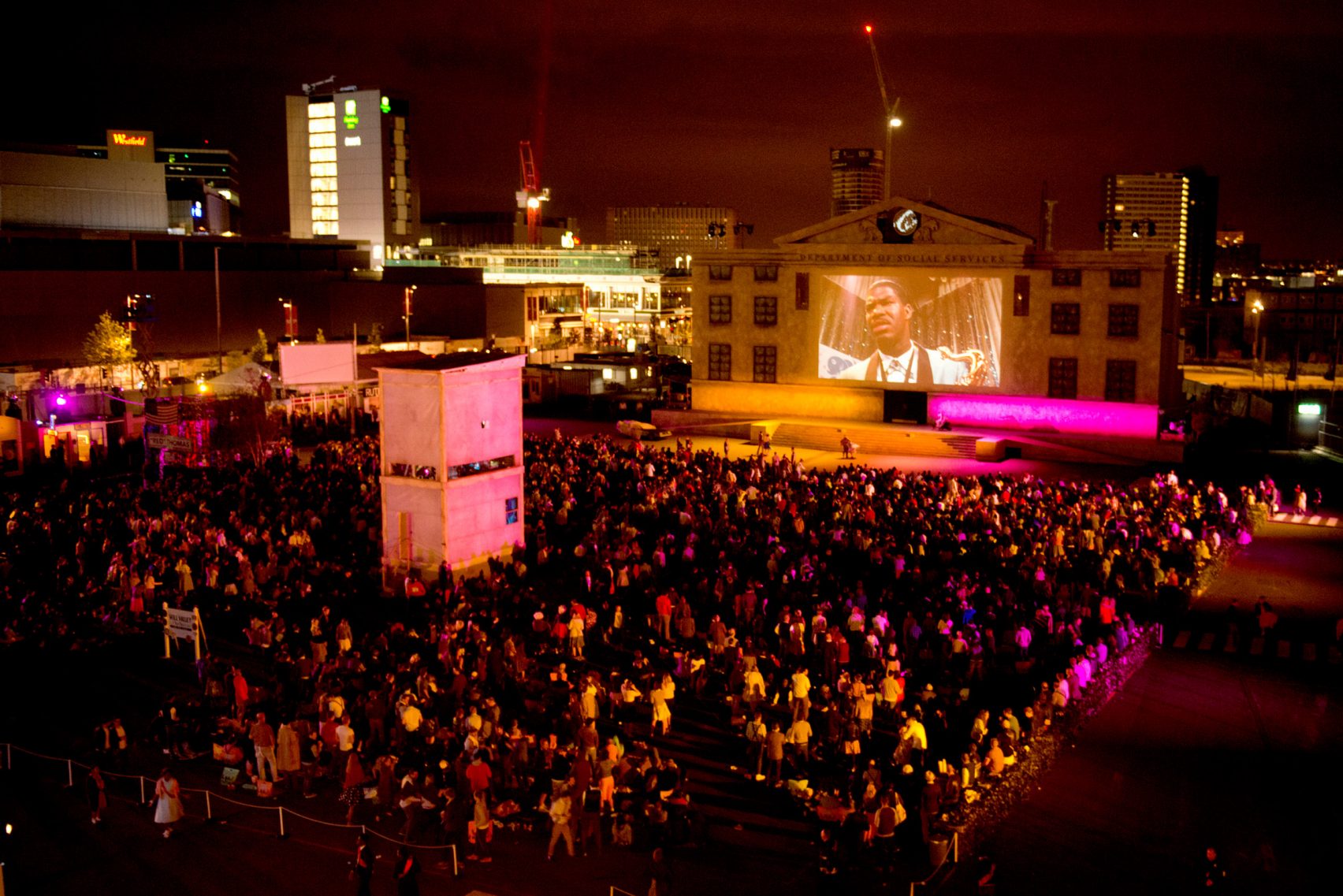Ever danced in acid rain, flirted with a Capulet, or stolen a forbidden substance from an underground warlord?
If the answer is yes, you’re probably already familiar with Secret Cinema.
And if not, believe us when we say that they are one of the absolute pioneers in the immersive space, particularly when it comes to film.
Having started with smaller scale, esoteric film screenings fused with music, art and performance, in the 15 years since its launch Secret Cinema has grown into an immersive juggernaut, creating multi-million pound productions from well-loved IPs that cater to audiences of over 150,000 people. Think James Bond, Star Wars, and Blade Runner.
Recently, the UK brand was bought by TodayTickets for $100m, with plans to expand the world over. Meanwhile its founder, Fabien Riggall, continues to break new ground with experimental formats like Lost, his new concept to reimagine disused community spaces.
In short: there’s a lot that experience designers from all sectors can learn from Secret Cinema.
But something we think is particularly useful is how the brand has managed to build an insanely engaged following of superfans that return to its experiences again and again – not only for new productions, but several times during the same run.
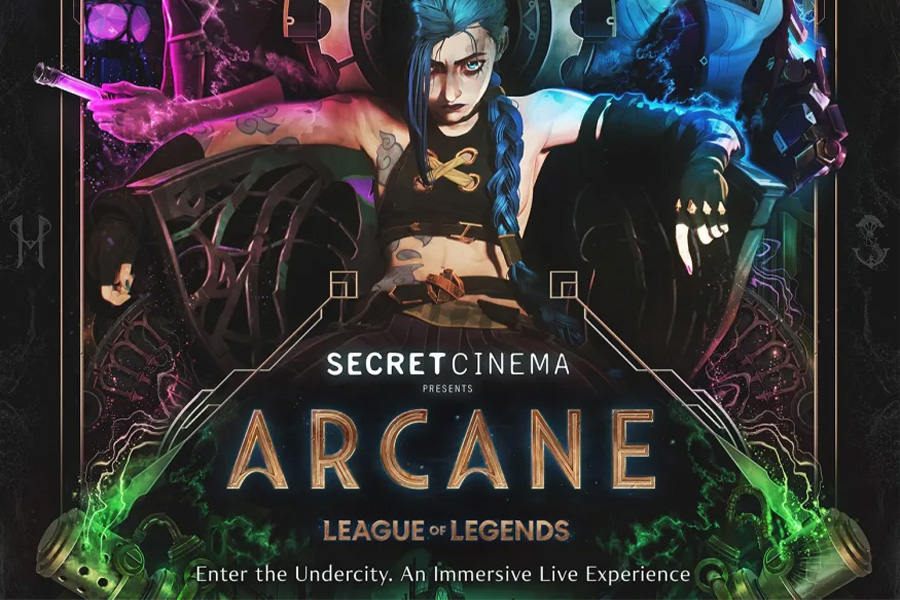
Its recent collaboration with Netflix and Riot Games on Arcane: The Live Experience in Los Angeles even introduced a new element to encourage repeat visits, designing several alternative endings that flexed depending on audience behaviour.
So to share exactly how it converts casual attendees into lifelong lovers of the brand, who better than experiential producer Andrea Moccia, who until recently had spearheaded Secret Cinema shows, including Arcane, for over 11 years.
Here are some of the gold-dust secrets he spilled for our Campfire. Tell no-one…
How To Turn A Cult Brand Into A Cultural Phenomenon
Secret Cinema started life in 2007 as Future Shorts: an international pop-up film festival that bridged the gap between esoteric short films and an audience who might not usually be exposed to them by introducing elements of music, art and performance.
From here, the “Tell No-One” concept evolved, where audiences would buy tickets without knowing what they were going to see or where they were going to see it. Instead, last-minute text messages would direct them to abandoned buildings where immersive performances would be staged around a screening.
As the brand grew they realised they needed to sell more tickets – and that to do this, they needed to reach an audience beyond the traditional immersive theatregoer, appealing to more casual cinema audiences.
Brand Secret Cinema was born, and is now the flagship brand, reaching audiences of hundreds of thousands and creating fully immersive experiences where everyone is in character, from the directors to the cleaning staff.
Since 2012, Moccia has taken rich, well-loved IPs and transforming them into living, breathing worlds in locations including the US and China.
“I get to have wonderful conversations about how many Stormtroopers we can have, or how to get an Aston Martin up four flights of stairs.”
Andrea Moccia
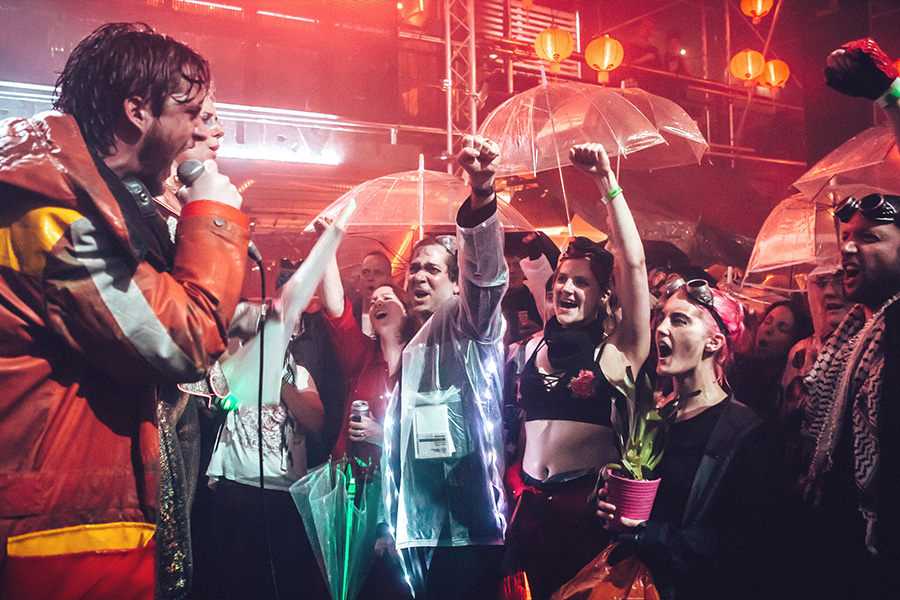
The brand’s credibility means they are given a lot of trust from filmmakers to handle high-profile IPs, often putting them back into the UK box office. Previous productions Moccia has worked on include:
- Blade Runner: the team recreated the neon-drenched, seedy world of post-apocalyptic LA, complete with real rain throughout.
- Back To The Future: the show that took them from grassroots to a massive cultural phenomenon, selling out in minutes and crashing the ticket website.
- Romeo + Juliet: Moccia worked with Baz Luhrmann on bringing his cult classic to life, leading him to remark: “I created the film, you guys made the world.” He also worked on the later, joyful production of Moulin Rouge.
- Guardians of The Galaxy: the most recent experience bringing the Marvel Cinematic Universe to life.
- Arcane: staged in November 2021 in LA in collaboration with Riot Games, the production opened Secret Cinema up to a massive and growing gaming audience, which shares a lot of similarities – gamers inhabit characters and roles every time they switch on. The show revolved around five warring factions of overlords who wanted to control the Undercity, and used six different endings to keep things interesting. More on this below…
How To Make The Basics Brilliant
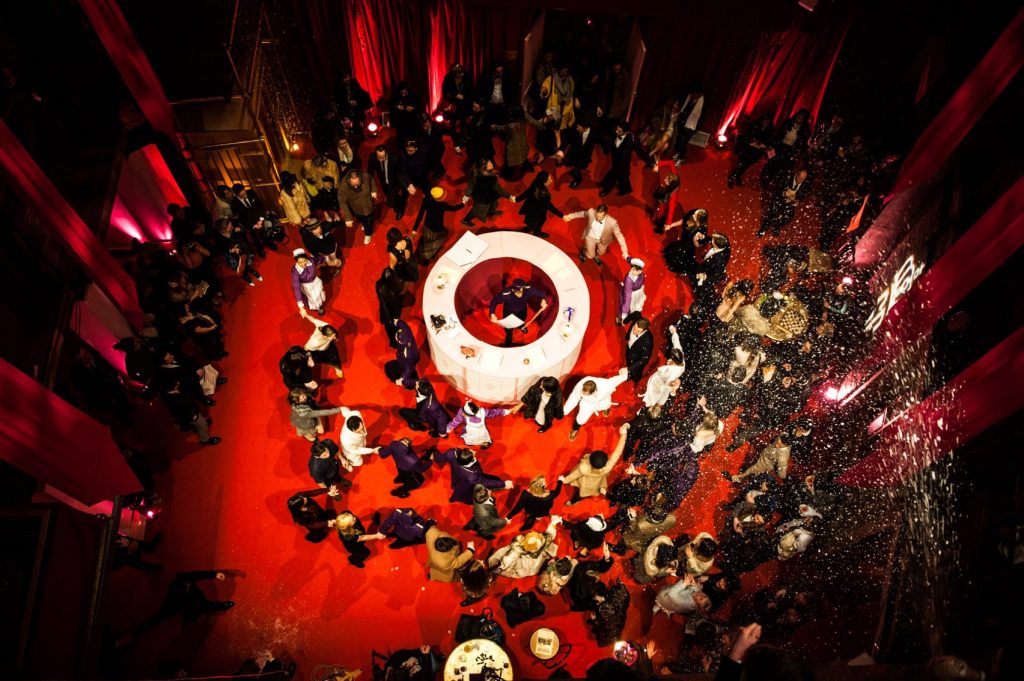
No matter how brilliant or creative your experience might be, in order to keep people coming back there are certain boring basics you have to get right, such as:
- A slick and clear ticketing and web experience
- Audience safety
- Welfare (e.g. toilets, bars, food)
- Queuing
- Staff training
However, just because these things are formulaic, it doesn’t mean you can’t find ways of making them fun.
“As creators in the immersive space, it’s in our nature to be innovative. It’s why the industry is so beautiful: from Secret Cinema to Meow Wolf to Cages to Swamp Motel, we all have ways of making the mundane interesting.”
Andrea Moccia
Here’s how Moccia and his team have previously tackled these challenges in Arcane and other productions.
Start Your Narrative From The First Step
Ticketing experiences can often feel very basic, prioritising a sales message focusing on urgency and scarcity. While having clear information about the event and an obvious CTA are crucial, Moccia thinks there’s also room to introduce narrative elements from the very beginning to create excitement and intrigue.

On the sales page for Guardians of the Galaxy, the standard ticketing information is on the left. However on the right, there’s a message from a character in the GOTG world about joining the crew seeking new planets, giving enough practical information but without revealing too much.
Create Clear Boundaries For Your World
The safety of both audience members and staff is always paramount. Secret Cinema has a series of guidelines in place to try and manage this:
- There’s a much higher staff to audience ratio than your average event, consisting of security, stage management, bar staff, and so on.
- All staff are trained to recognise a “red/blue code” system. A blue code is when an audience member is perhaps a bit too excited and threatening to impact the smooth running of an event, in which case security will take them aside to remind them this is a real event with real people, before releasing them back. A red code is when they are being aggressive, stealing, evidently on drugs, and so on, in which case the audience member would be pulled out of the show and the performer given some time to decompress before restarting.
- They post the house rules online before the show and get front of house staff to remind the audience of them upon entry.
This last point is perhaps the most important.
“Communicating with your audience about the boundaries of your world is key. There are so many formats within immersive, that it’s important to know the level of agency and where the limits are – these will be different in Secret Cinema, Punchdrunk and a museum show.”
Andrea Moccia
Provide Engaging Experiences Within Your Experience
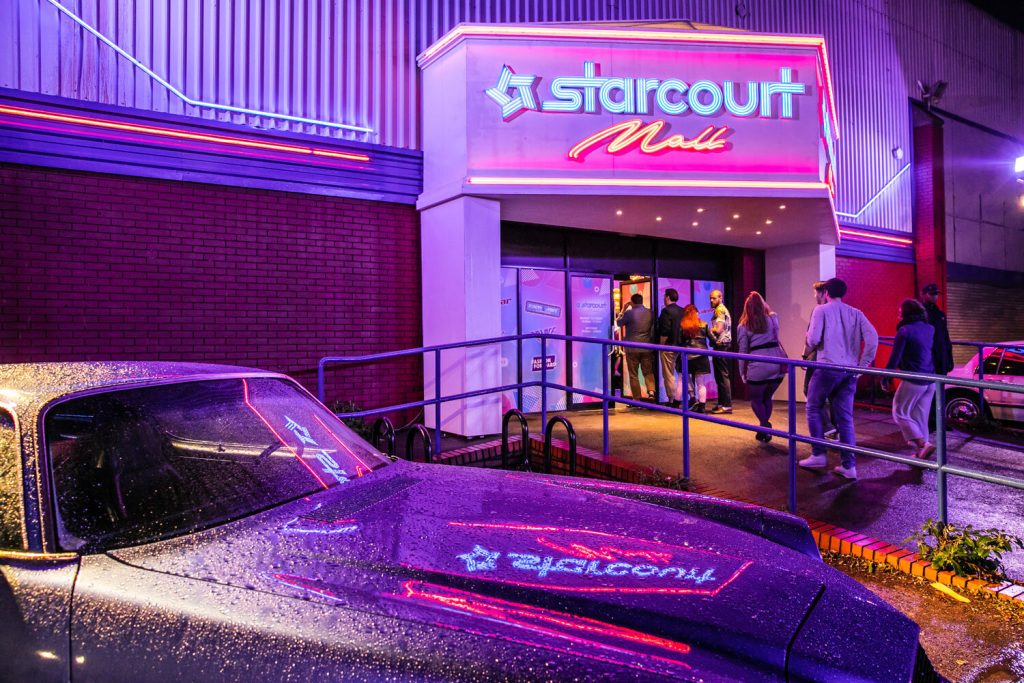
To build a world, you need to ensure every aspect of it is consistent and engaging. This extends to concessions, which need to fit within the world you’ve created.
At the Stranger Things experience, for example, the ice cream parlour was themed to mirror the Scoops Ahoy parlour from the actual show. Each concession had different menus, characters and receptacles, which became collectible items that give people another reason to come back and experience for themselves.
Toilets might be a necessity, but they can still be brought into the world you create. At Burning Man, for example, Moccia entered a Portaloo that turned out to contain a lush forest full of fairy lights.
Even Queuing Can Be An Experience
Talking of toilets… queues might be an inevitable part of an event where you’re dealing with large numbers of people, but that doesn’t mean you can’t make them interesting.
Moccia spends a lot of time planning the queuing experience at Secret Cinema shows. Characters run up and down the queue, security take some people out of it and guide them through secret entrances, and the set is elevated with exciting elements like fire, smoke and explosions. The result is that even when waiting for the loo, people remain within the story.
Give Your Staff The Tools To Connect
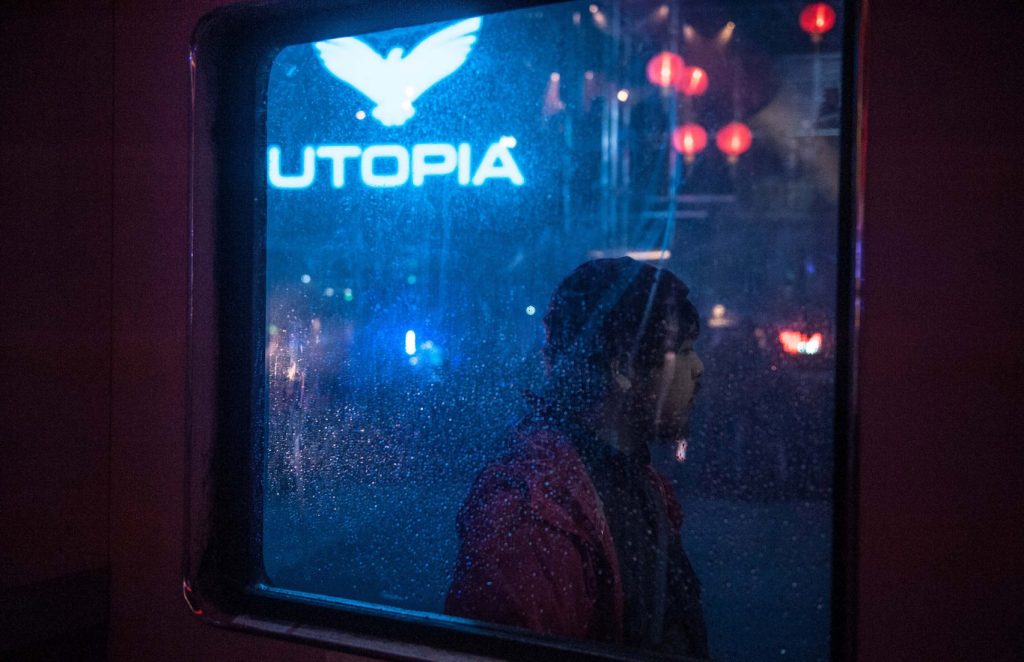
Secret Cinema’s experiences are human heavy: they take place in real sets, with real actors, and are all about sparking human connection.
It’s therefore important that staff are trained and given the ammunition they need to keep up this level of connection. All staff have to go through the same performance training as the actors and are given costumes and characters to ensure the world is maintained.
The result is that you can speak to any member of staff, from bar to security, and have an hour-long conversation where you spitball about relevant material.
Although the audience will never be able to speak to every performer due to the sheer numbers involved, this FOMO can actually fuel repeat visits. Secret Cinema leaves some high-stakes characters in partially hidden places, so that finding them becomes a sort of reward.
Meanwhile, performance-training functional staff and creating minor characters to interact with becomes as – or more! – fun that speaking to the lead character, as you have more time to engage and play with them.
How To Build On The Basics To Lure People Back
Once you’ve mastered the basics, the real fun begins…
Immersive formats naturally offer people opportunities to come back, as it’s hard for someone to experience everything an open-world format has to offer in one visit.
But as the industry grows and there are more and more players, you can’t just do the basics listed above in order to entice people back for more.
Secret Cinema therefore started to think about other elements they could add to their experiences to encourage repeat customers, namely:
- A bespoke overall audience journey
- Character identity, factions and teams
- Audience narrative tracks
- Sets, props and secret rooms
- Gamifying the experience
- Win / lose at the end, contributing to success or failure of a mission
- Multiple endings
- Empowering the cast
You can see many of these elements in action in Arcane.
Create An Audience Journey
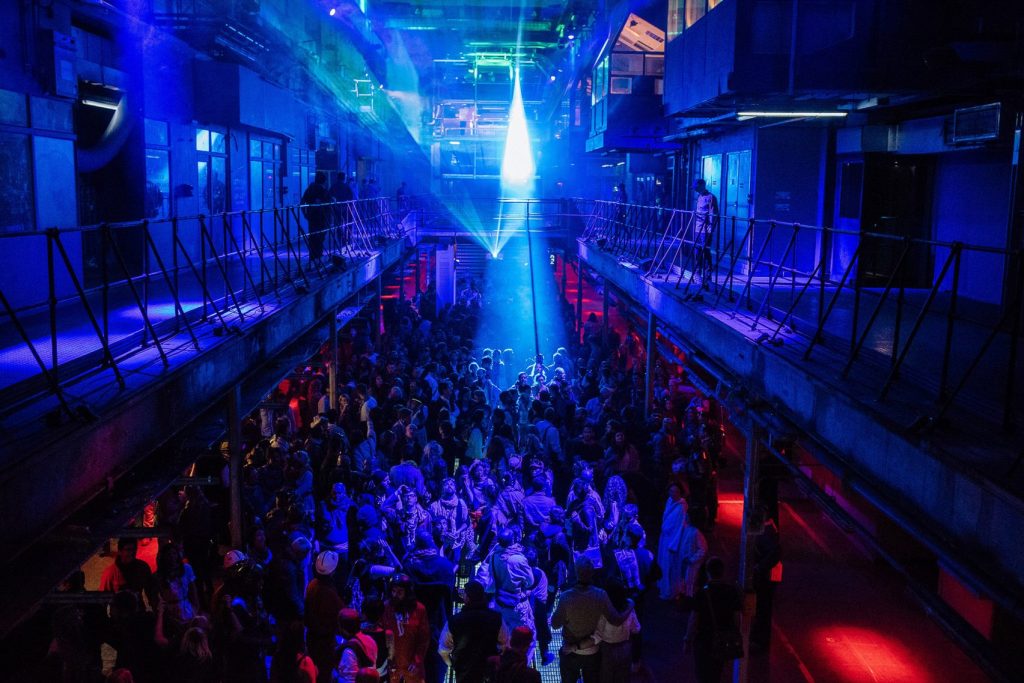
At Secret Cinema, the experience doesn’t begin and end when you cross the threshold into the event space.
Instead, your journey begins before ticket sales have even started, and continues long after it ends.
The structure of the audience journey looks like this:
- Online tease campaign: cryptic posts that tease something is coming in order to trigger online conversation where people try and guess the film.
- Pre-event website: a dedicated site where you discover your character, costume and elements of the story.
- Narrative content and marketing: dropping clues about who they need to meet, details about sets, and so on. This might refresh as the production evolves and you introduce changes, e.g. new characters or scenarios.
- Show: no two people have the same experience.
- Post-show content: emails, photos and videos to keep conversation going. Creating shareable social assets also means you’re able to control the conversation and showcase only what you want, as well as advertising the spectacle to new audiences.
Give People A Choice Of Roles
Some people who attend a Secret Cinema show just want to watch the spectacle unfold around them, while others are storytellers and seekers who want to get into every detail.
The amount of the audience in these brackets might vary between territories and demographics – in the UK, for example, audiences first head for the bar and then go crazy roaming the experience, whereas Chinese audiences prefer to get stuck into the missions.
Regardless of the audience breakdown, you need to cater for these skimmers, swimmers and divers equally. At Arcane, Moccia used a questionnaire to help get a sense of the people attending, asking them for their nickname and skill set, in order to ensure they get the best experience.
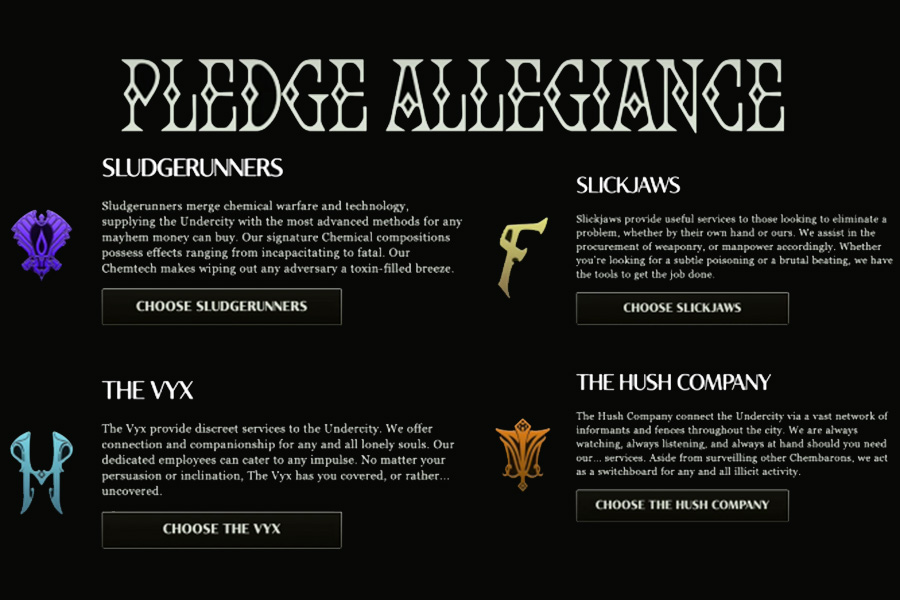
They were then directed to choose a faction to belong to, each of which had control over a different aspect of the Undercity. These groups had different character traits – for example, the Vyx were “provocative, promiscuous and persuasive” – and different looks, so people could choose which most appealed to them.
“If we give people a choice of characters, it gives them the opportunity to come back as a different group and have a different experience.”
Andrea Moccia
They were assigned a role, but given enough autonomy to build and make it their own through personality tests, puzzles and creating their own shareable social profile.
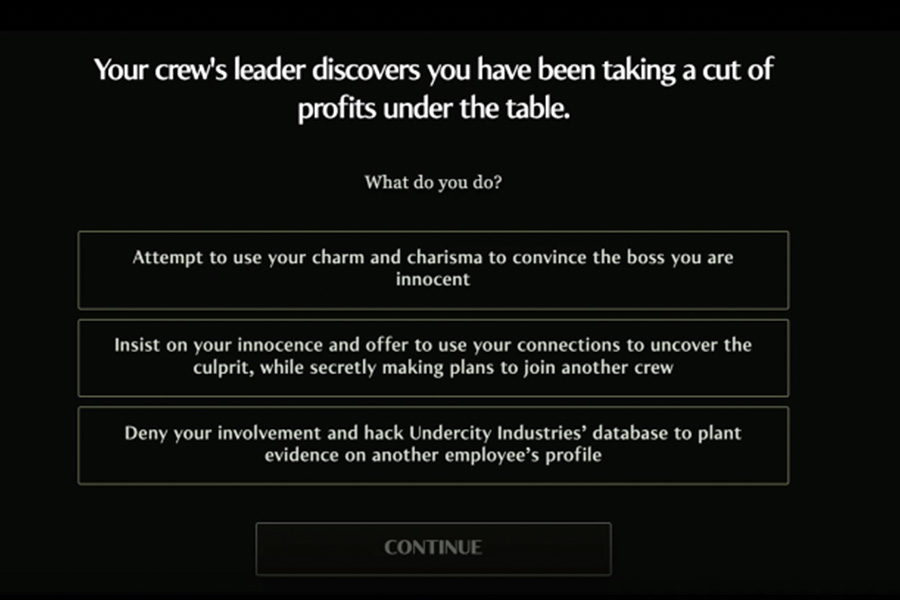
This also had the added benefit of bringing people repeatedly back to the website, where Secret Cinema could deliver further bits of storyline, practical information and sponsorship messages.
This level of engagement might not work for all audiences. Secret Cinema has the advantage of an incredibly engaged audience base who really want to participate in the experience, whereas if you’re trying to deliver corporate training in the same way, you might face more of a battle.
Moccia suggests that the key to engagement lies in providing value to the audience.
“We try to make it an integral part of the experience so if you don’t do it, you feel like you’re missing out. These games are tools you’re going to need when you come to the show.”
Andrea Moccia
Personalise The Experience Narrative
When people arrived at Arcane, they were prompted to go and find the characters who would guide them through their missions for the evening, mirroring the role they had chosen for themselves. This element of personalisation lures them back to experience the event from another perspective.
As an LA audience was perhaps less familiar with the brand than a London one, they punctuated the set with different colours that matched those of each faction so they could more easily locate the correct track.
These faction colours and logos also provided a merchandising opportunity, and were turned into t-shirts, pin badges and temporary tattoos that audiences could purchase.
To avoid making audiences feel “gamed”, Moccia suggests only working with products or partners that fit within the experience – for example, a high-tech phone partner would be inappropriate for the fin-de-siecle world of Moulin Rouge – and finding things that augment the audience experience and are desirable, such as a photobooth.
To allow for personalisation and autonomy, Secret Cinema productions don’t work from scripts, but are largely improvised based on an Excel schedule.
“Behind most great creative ideas is a very big working spreadsheet!”
Andrea Moccia
While the shows might seem chaotic, random and with lots of opportunity for the audience to create their own story, they are actually incredibly planned.
Design Layers Of Detail To Discover
Bigger sets don’t necessarily mean a better experience. What people want is detail and layers to discover that other people might miss. Meow Wolf does this very well: you can look and enjoy what’s there on a surface level, but if you want to dig deeper into the narrative, you can.
At Arcane, Moccia hid easter eggs throughout the sets – for example, a plush bunny toy belonging to the character Jinx hanging from the rafters. At the Casino Royale experience, they were able to borrow items from the actual film archives. These are the kinds of details that superfans will love and come back to find.
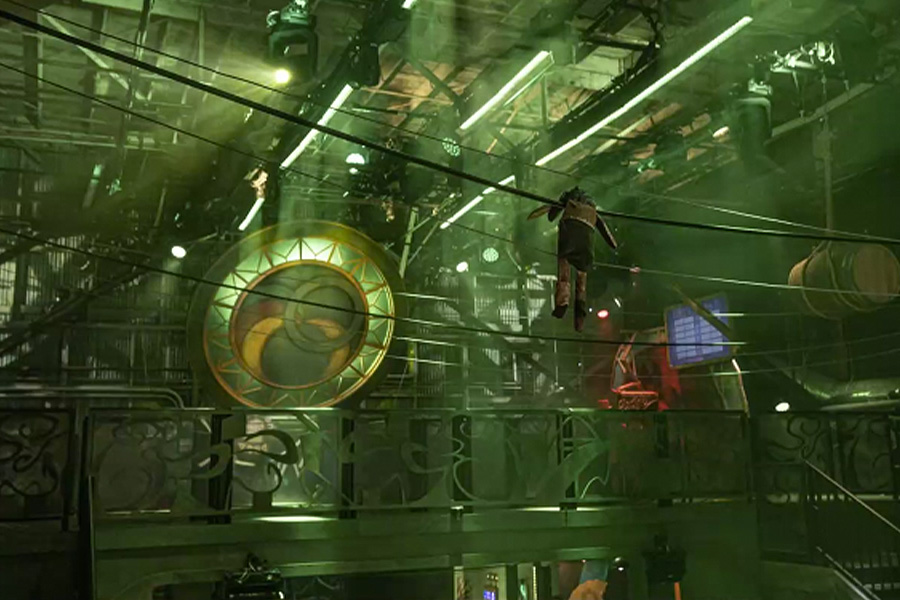
Gamification can also tie into these layers of hidden meaning. In one room of Arcane, you had to find different elements to unlock a compartment containing a notebook with key information, before being interrupted by guards and having to flee through a hatch. In another, you had to find the formula for “shimmer” through clues hidden in the set and characters, turning it into a shot you could drink.
Turn Your Experience Into A Game With Stakes
In fact, Secret Cinema worked with escape room designers to create a massive game that took place all over the Arcane site.
Audiences would be tasked by characters with stealing “shimmer”, an illicit liquid craved by the underlords. When they brought it back to their starting character, they would scan the vat and add it to the overall team pot, with the scores displayed on a huge billboard.
The faction that had the most shimmer by the show’s finale won control of the Undercity and triggered a different ending.
Allow For Multiple Endings
The six finales for Arcane, determined by the winning team’s shimmer total, weren’t totally unique due to budget and timing constraints.
However, while some of the more complex and risky cues had to remain fixed, there were also slots that could be changed depending on who won. Regardless, at the very end the lead character, Jinx, would come out and blast the audience with their iconic gun before the space was transformed with UV lighting.
The WXO Take-Out
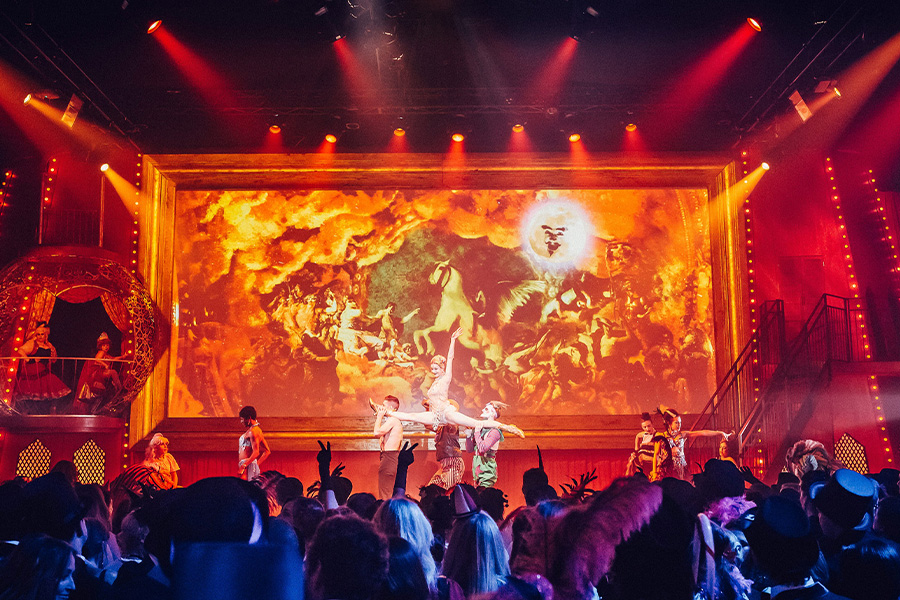
We think that Secret Cinema is a masterful example of how to scale an experience while still retaining a sense of mystery and surprise – not only catering for new audiences who might be unfamiliar with the product, but luring back superfans through personalised details, roles and hidden challenges.
By experimenting with different narrative tracks, multiple endings and a range of autonomous characters, there’s also plenty to keep audiences coming back to the same production throughout its run.
And while Moccia’s insights are obviously applicable to the immersive space, we think they have wider implications for any experience where you’re building a world, whether that be an event or an exhibition.
So next time you’re creating an experience and want to think about repeat business, ask yourself:
- How might you create multiple endings or exit points for your experience?
- How might you leave room for serendipity, so people can co-create their own experience?
- How might you make people have to return to your experience?
To continue the conversation, WXO Members can head to the topic on My WXO here.
To see the full line-up for the WXO Campfires Season 5, click here.
To apply to join the WXO and attend future Campfires, click here.

